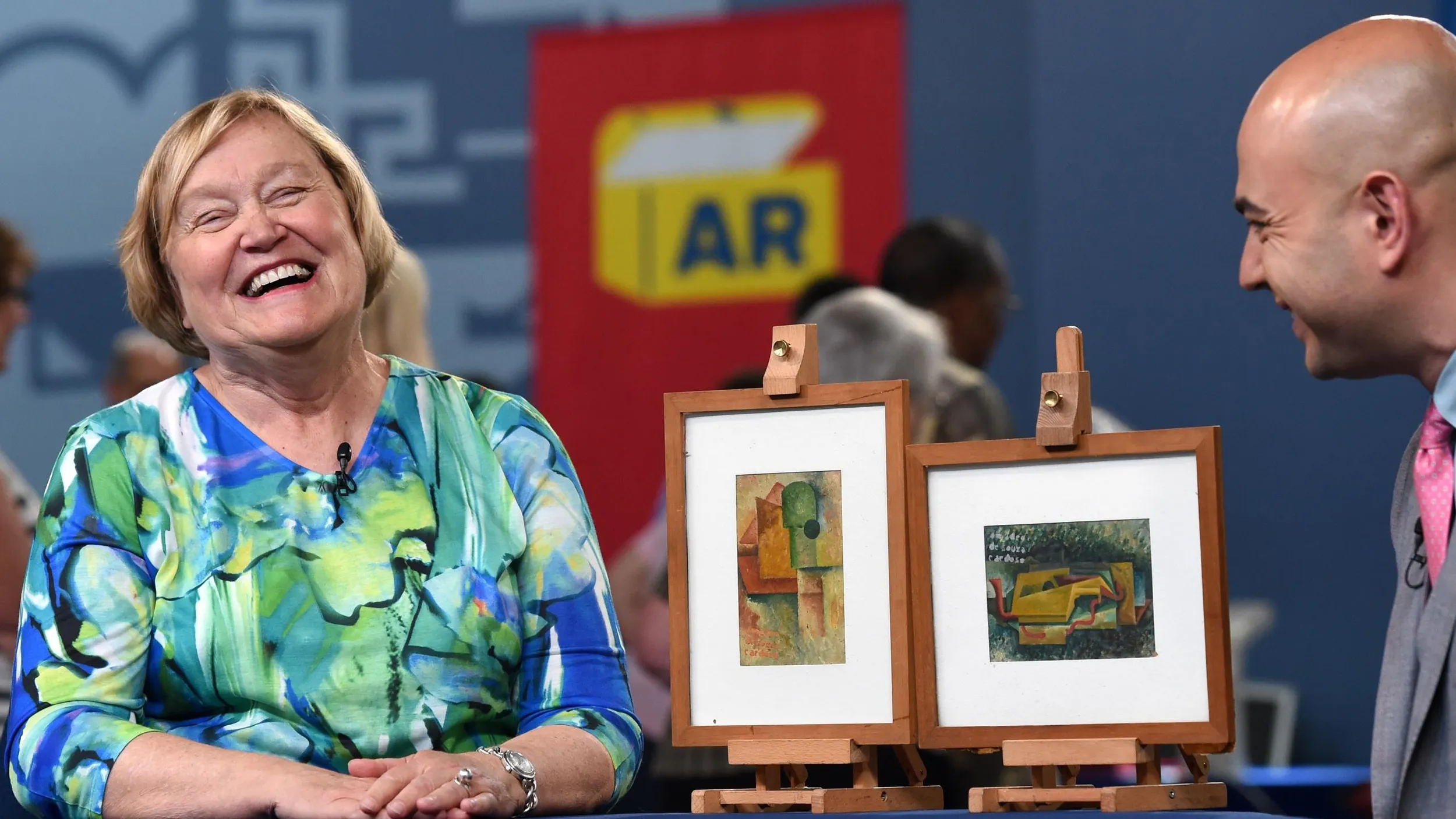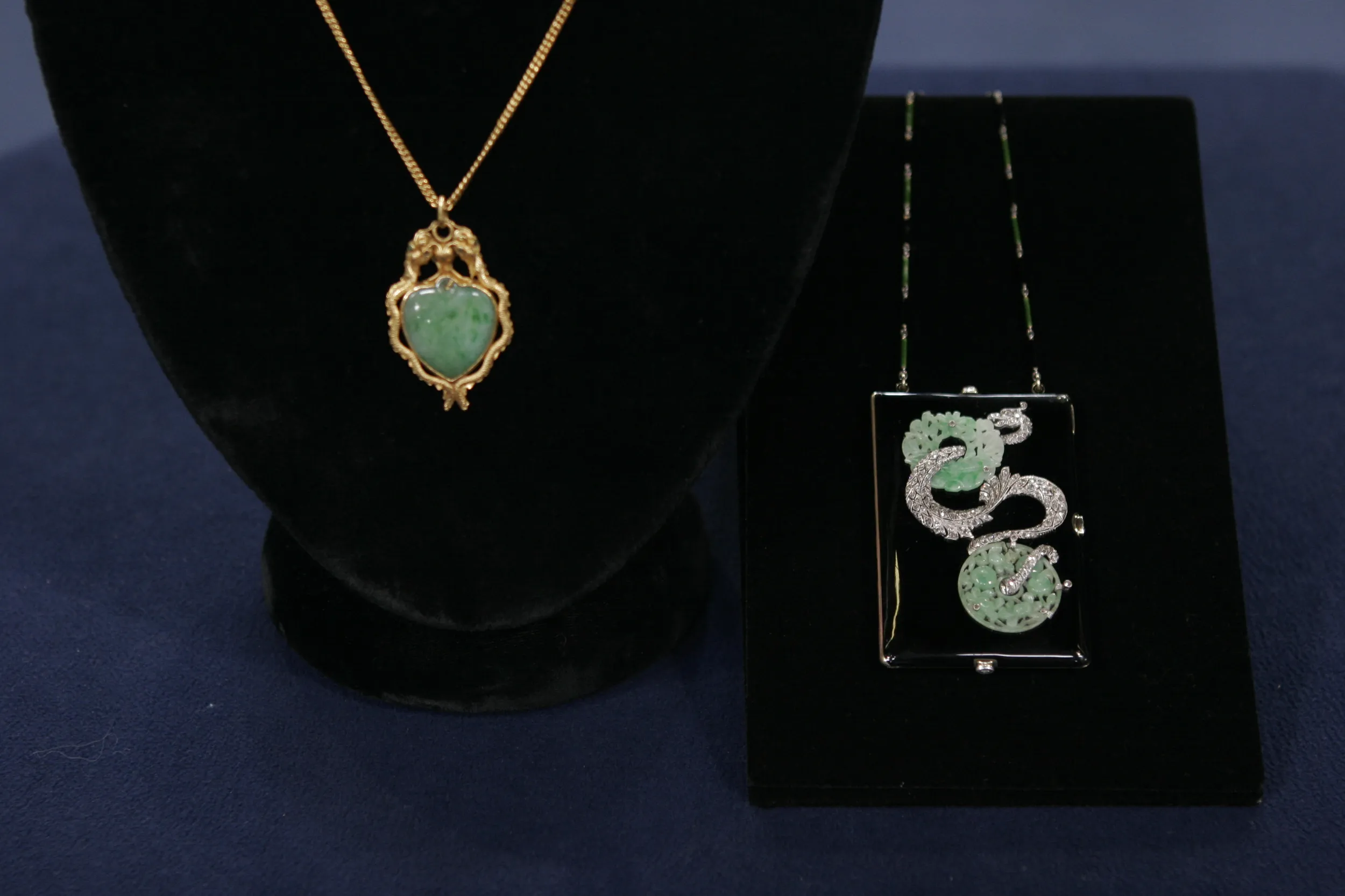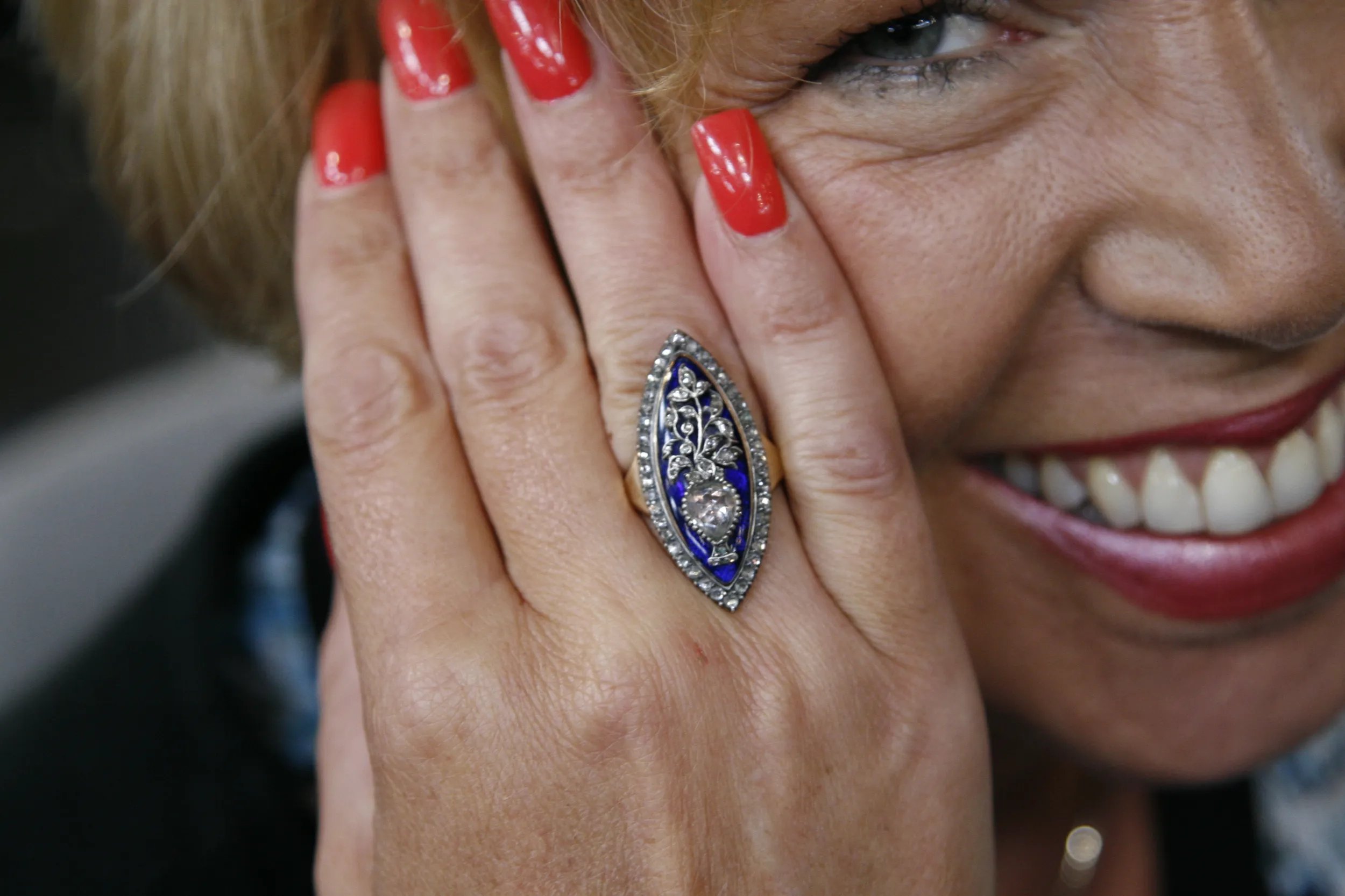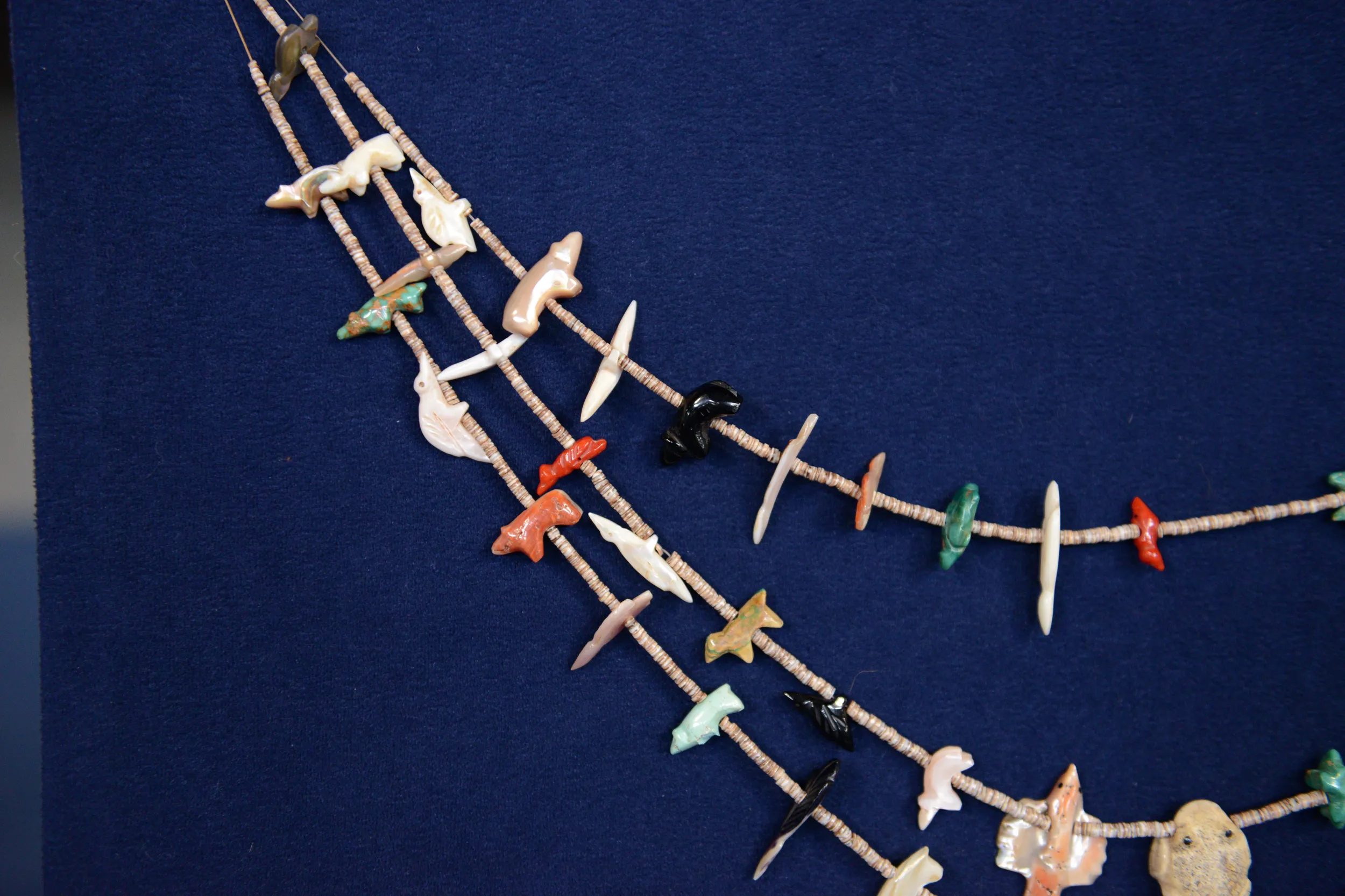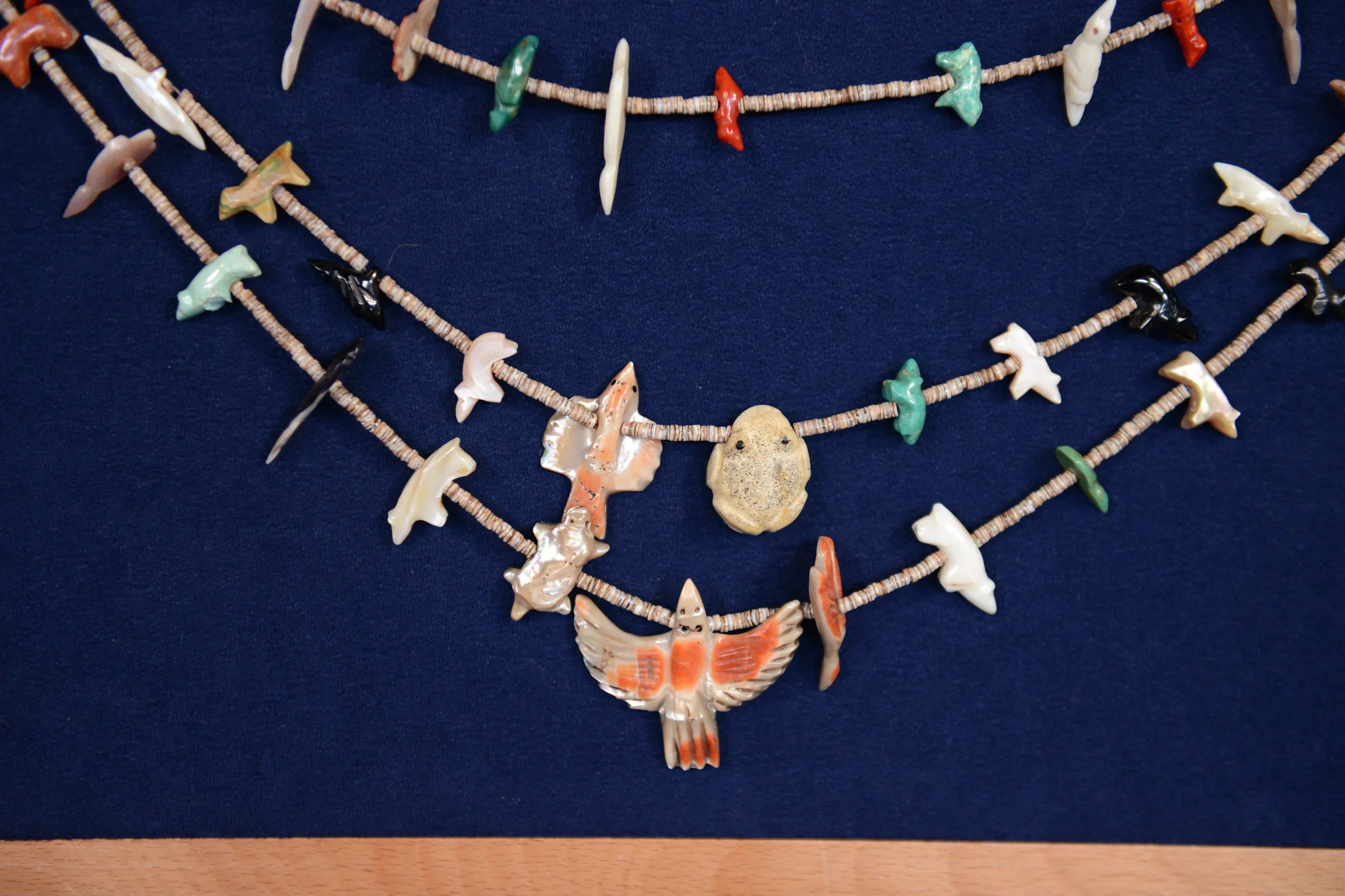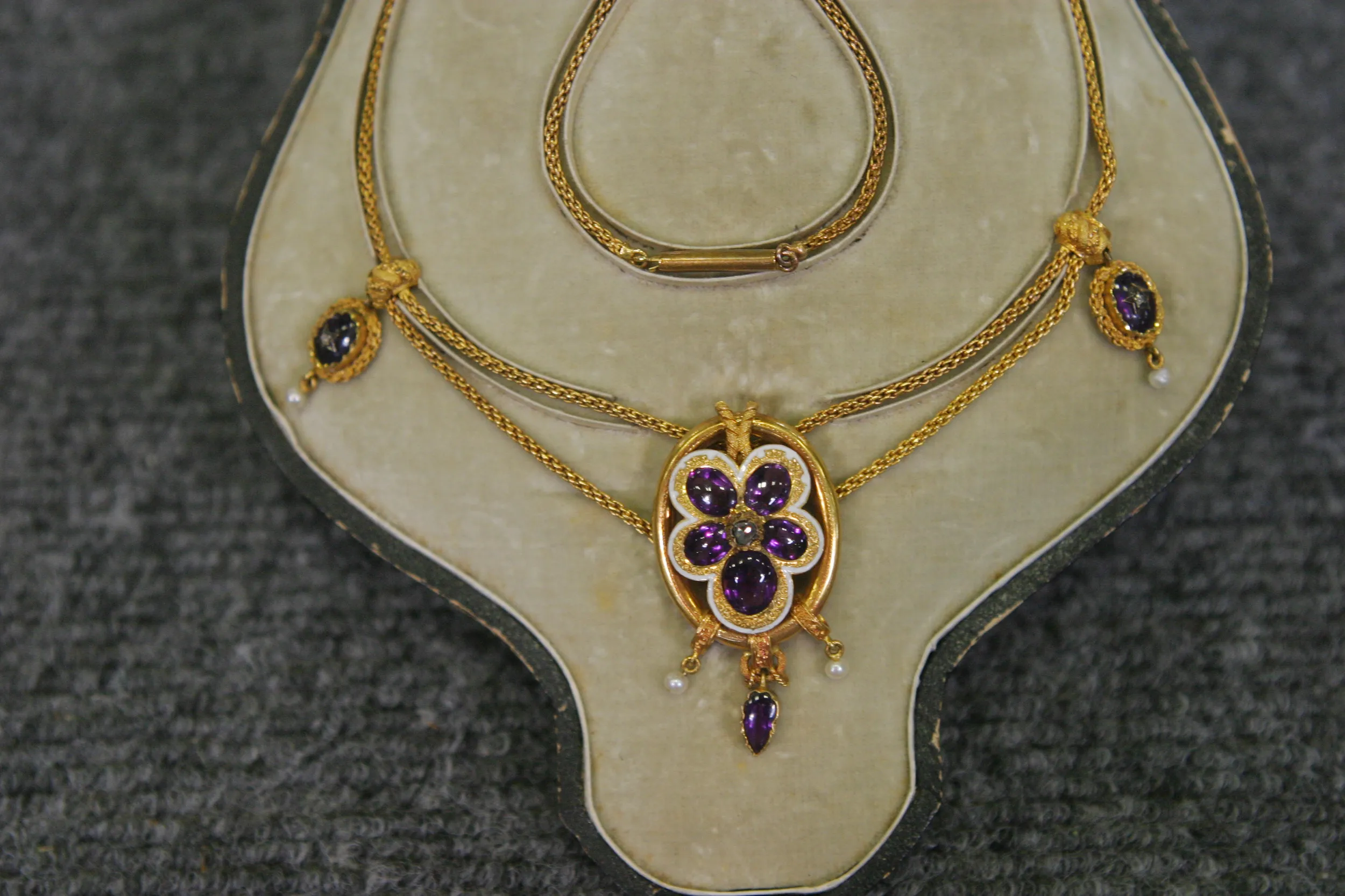GUEST: This necklace was given to me by my mother, who received it from her sister, who did a lot of trading with the Native American pueblos in New Mexico. I grew up in Santa Fe, New Mexico. My parents moved there from Michigan in 1942. They just traded with the Indians a lot.
APPRAISER: Well, they must have had a lot of fun doing it-- I can sense they did.
GUEST: They did.
APPRAISER: Do you have any sense of what pueblo this is from?
GUEST: I'm afraid I don't.
APPRAISER: Okay.
GUEST: No, I don't.
APPRAISER: It's from the Zuni, Zuni Pueblo.
GUEST: Okay.
APPRAISER: An ancient Pueblo, occupied for well over 1,000 years. One of the things I think that's so interesting about this necklace, the fetishes are actually inspired by ancient fetishes that are pre-contact, maybe as much as 1,000 years old.
GUEST: Oh, my gosh.
APPRAISER: There was a trader in the Southwest named C.G. Wallace, and he encouraged silversmiths and arts and crafts workers amongst the Native tribes to do innovative things, and this was very innovative.
GUEST: Yes, it is.
APPRAISER: It's called a fetish necklace, and there are many fetishes here.
GUEST: Yep
APPRAISER: We have an eagle fetish, a frog fetish, a bear, many birds, another bear. It's really quite a remarkable grouping of animals. And these are all animals of the natural world that would be in the Zuni world. The materials are wonderful, and there's quite a few of them.
GUEST: Yes?
APPRAISER: There's spondylus shell, different types of shell, jet, turquoise, coral. It's really a remarkable set of materials.
GUEST: Yes.
APPRAISER: The spondylus shell, which is hand-carved, has two colors. It has the metallic sort of shiny shell color underneath, and then when it's carved, there's the red color.
GUEST: Okay.
APPRAISER: So it's really intentionally worked for the variety of color here. You'll notice many of the eyes are black. That has jet in them. The little frog is antler, deer antler.
GUEST: I thought it was.
APPRAISER: The little beads are called heishe. Those are shell beads. They're hand drilled.
GUEST: Yeah… So…
APPRAISER: And that's the little connections between all of the fetishes.
GUEST: Okay.
APPRAISER: I think this was made by one of the most famous jewelers of the Southwest,
GUEST: Oh my gosh.
APPRAISER: A gentleman named Leekya Deyuse. He was born in 1889, died I believe in the 1960s. He is the preeminent Zuni fetish carver. He just worked...
GUEST: Oh, my gosh.
APPRAISER: Yeah, really spectacular. He worked with hand tools, he used chisels, sandpaper, different things to work the shell down into a beautiful depiction. If it's not made by Leekya Deyuse, it would have, I think, been made by his daughter Alice. And in either case, it's quite special. And she followed in her father's footsteps. I think on a retail basis, this would sell for about $3,500.
GUEST: Mhmm
APPRAISER: And if we could determine without any doubt that it is by Leekya, then I think we could double that, and we'd have a value, a retail value, of about $7,000.
GUEST: Oh, my gosh.
APPRAISER: You've kept it in good shape. You want to continue to keep it in good shape.
GUEST: I've tried to take very good care of it.

